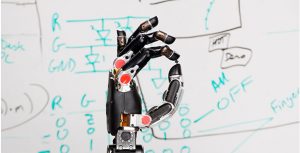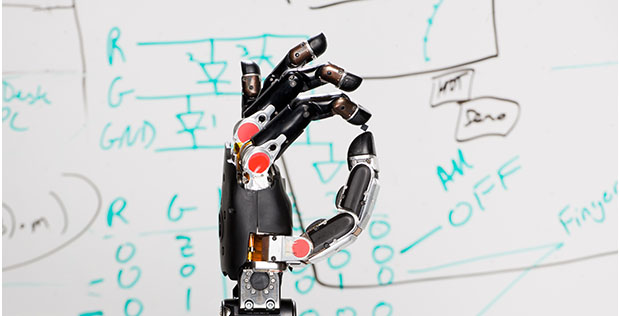DARPA Has Just Developed A Prosthetic Hand That Can Actually Feel
There have been many strides made in the prostheses field thanks to robotics technology and artificial intelligence. Patients are now capable of moving prosthetic limbs with only their thoughts, as if it were a natural body part. While these advancements are beneficial, until now, wearers had no sensation in their prosthetic limbs.

Thanks to the Defense Advanced Research Projects Agency (DARPA), all that has changed. The agency’s hard work and advancements have granted a 28-year-old, paralyzed for more than a decade, the ability to “feel” physical sensations through a prosthetic hand directly connected to his brain, and even identify which mechanical finger is being gently touched.
“We’ve completed the circuit,” said Justin Sanchez, DARPA program manager, in a DARPA news release. “Prosthetic limbs that can be controlled by thoughts are showing great promise, but without feedback from signals traveling back to the brain it can be difficult to achieve the level of control needed to perform precise movements. By wiring a sense of touch from a mechanical hand directly into the brain, this work shows the potential for seamless bio-technological restoration of near-natural function.”
How they did it
Making this possible involved placing electrode arrays onto the paralyzed volunteer’s sensory cortex region of the brain (responsible for physical sensations), as well as the motor cortex region, responsible for body movements.
Then wires were run from the motor cortex to a mechanical hand developed by the Applied Physics Laboratory (APL) at Johns Hopkins University. At this point, the volunteer was able to control the prosthetic with his thoughts. Finally, the team of researchers routed special torque sensors that were on the hand to the volunteer’s brain to convert physical “sensations.”
And it worked.
The volunteer reported feeling in his fingers during testing, 100% of the time.
“At one point, instead of pressing one finger, the team decided to press two without telling him,” said Sanchez, who oversees the Revolutionizing Prosthetics program. “He responded in jest asking whether somebody was trying to play a trick on him. That is when we knew that the feelings he was perceiving through the robotic hand were near-natural.”
DARPA recently invested neurotechnologies studies to assist individuals living with paralysis.
For more information, visit DARPA.

